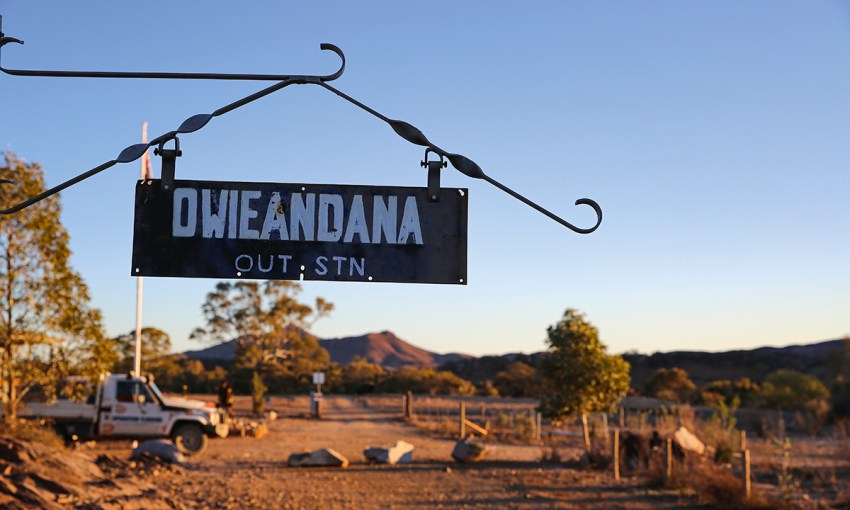Join SALIFE for a hike through the remote wilderness and meet the volunteers behind world-leading outback intervention program Operation Flinders.
Operation Flinders: Into the wild
The first rays of sunlight have pierced the horizon to the east of Owieandana Outstation, thawing the crisp desert air and melting the Milky Way into the blue of morning. Emerging from overnight lodgings in an old shearers’ quarters, a hypnotic stillness envelops Operation Flinders base camp.
SALIFE arrived here yesterday, a few days into an Operation Flinders exercise. More than 100 “at-risk” teenagers are out in the remote wilderness and separated into teams, each with two adult leaders. Across hundreds of square kilometres of the vast Yankaninna Station, which is leased by Operation Flinders, the camps are beginning to rouse from a cold, cloudless night in their sleeping bags and canvas one-person shelters. The temperature overnight dropped to three degrees.
After breakfast, they will sling on their packs for another day of hiking through rugged drought-stricken country. The packs feel twice as heavy as the day before and the blisters on their feet are twice as sore.
The participants, aged from 14 to 18, will trek about 100 kilometres over eight days, each night stopping at designated campsites, set up with the bare essentials of water and food supplies. They will scale mountains, use teamwork to overcome challenges and meet an Indigenous elder who shares his culture. Although it sounds like boot camp, it is far from it — a clinically-structured and supportive adventure-based journey.
To take part, “at-risk” teens aged 14 to 18 are nominated by schools or agencies on the basis of factors including social or economic disadvantage. Operation Flinders ran five exercises from March to September 2019, with 190 field staff, more than 400 participants and 42 tonnes of food, at a cost of $2 million. More than 8000 young people have participated since the program’s inception in 1991.
By the end of the week the participants, some who have never been camping before, will have discovered far more about themselves than they ever thought possible. They are told this could be the toughest but most worthwhile thing they’ve ever done and, so far, the journey is shaping up to be exactly that.
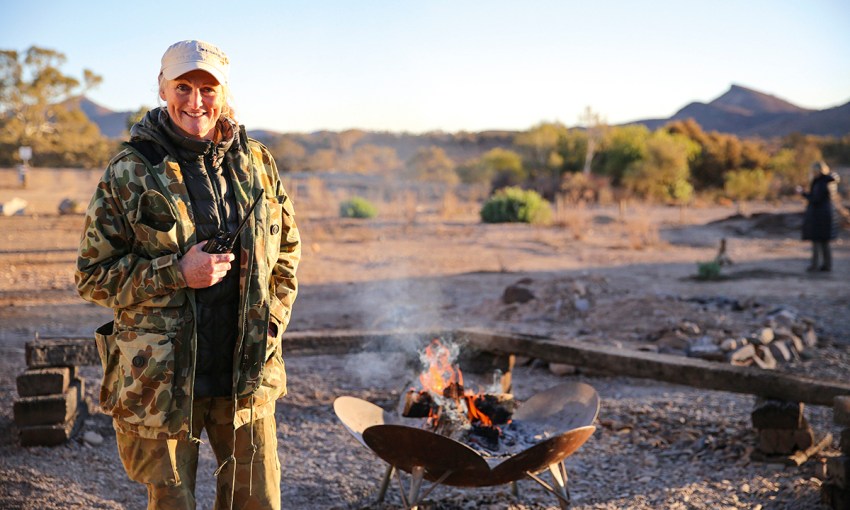
UNDER THE STARS
At base camp, Lisa Fauser wakes before sunrise, her boots crunching on the rocky earth of the station. It’s barely above freezing as she fires up the urn in the kitchen on her way to the shower block, then pours a coffee on her way to the operations room — ready for teams to radio in at 0700 to report their status.
Since joining Operation Flinders as a volunteer, shortly after retiring from her career in the police force, Lisa has done “the walk” 11 times as a team leader, covering a total distance of more than 1100 kilometres on foot, each time lugging a 20-kilogram backpack.
On this exercise, she is the trainee operations officer, or “opso”. A radio is kept on hand 24 hours a day, as assistance is often called for during the night. “The radio procedures come as second nature to me, but the biggest learning curve is all the movement that goes on with 11 teams out there,” Lisa says. “It’s a bit of an eye-opener as to how much work is involved.”
There are two SA Ambulance volunteers on base who, when needed, travel by four-wheel track to meet teams and tend to cuts, bruises or sickness accrued on the journey.
The feeling of isolation is a primary tool of the program and, aside from radio contact, participants never cross paths with other teams in the field. Nor do they set eyes on base camp at Owieandana Outstation, which is a hive of activity with volunteers working in maintenance, logistics and communications, while the kitchen team keep the “vollies” well-fed.
“The volunteers get on very well and we’re all here for the same reasons; it’s good for everybody,” Lisa says. “We’re away from our own families, but we wouldn’t do it if we didn’t love it.”
Having led teams through the journey herself, Lisa’s witnessed the typical range of emotions, from initially fighting against the experience to ultimately accepting and embracing the challenge. “When you’re a team leader you see a great transformation in the kids. It might not be straight away for every single participant, but there’s always a change in attitude.”
Volunteering with Operation Flinders provides a fulfilment that was missing when she left the police force. “For me, it’s about that service aspect — giving back to the community,” she says.
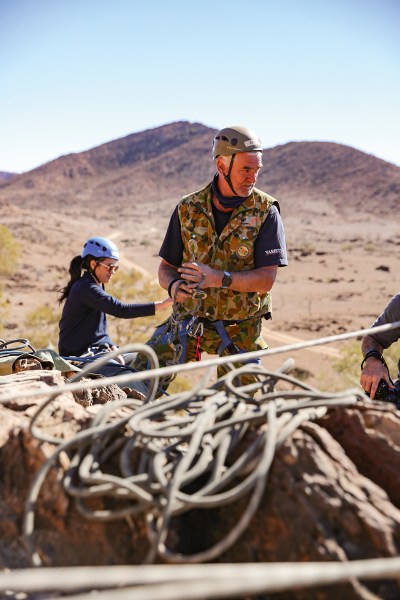
CLIFF HANGERS
During their eight days in Yankaninna Station, each team will hike to the abseil site where the awaiting instructors will guide them through two transformative hours, aimed to build resilience, confidence, and trust.
Andy Amberg has coached hundreds of teenagers through the abseil. His deep, calm voice carries across the outback as he calls down instructions from the top of the 25-metre high cliff.
“We have to build trust in a very short period of time here at abseil,” says Andy, who is a teacher at Mount Barker High School. “Many of the participants don’t trust adults and they don’t like authority.”
Leaning back over the edge is an unnerving experience, but attitudes change in the space of a few short steps as fear quickly dissolves into smiles, laughs and thumbs-up from the bottom. “All of a sudden you see them thinking ‘this isn’t so bad’, and starting to trust in the equipment and instructor,” Andy says. It’s a taxing job for Andy who is giving instructions, securing equipment and providing encouragement.
“This is quite confronting for kids at times, but it breaks down barriers and stereotypes,” Andy says. “For a lot of them, the change in two hours is remarkable, and they remember it. Even for adults it’s an adrenaline rush; it doesn’t matter who you are.” Despite all this, 98 per cent of participants complete the abseil.
Abseil can reveal vulnerability even in the biggest and toughest participants. “They’re way out of their comfort zone and for me it’s about looking at the character strength of each individual,” he says. “At-risk kids already have a certain amount of resilience based on their lives because of the hardship they might have endured. It’s a matter of using resilience in a positive way.”
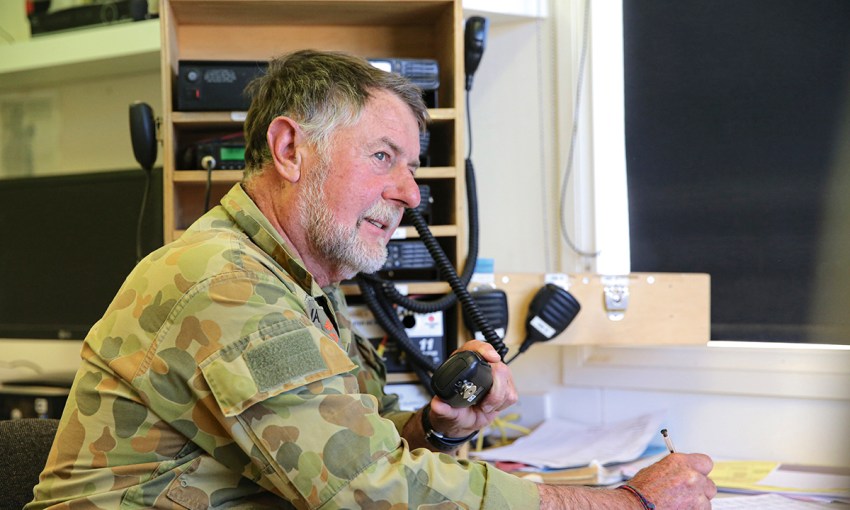
BUILDING RESILIENCE
Ian Basey is the sort of bloke you want to share a campfire with. He has a wealth of stories from his career as a detective sergeant and also from his days as one of the country’s top international tennis officials. He once made headlines for reprimanding John McEnroe for hurling abuse at a net judge.
The 69-year-old’s demeanour commands an element of respect, but he also shows great empathy — a commonality between the volunteers. Over the past 13 years, every exercise Ian’s been involved with has changed him in some way and he’s garnered a wealth of outback knowledge. His wife is also a volunteer on this exercise and is currently somewhere out in the bush.
“What some of these kids go through in life makes you appreciate what you and your family have. You learn from how they manage and how they cope with their personal challenges and you learn from their resilience,” says Ian, who was still hiking with teams well into his 60s.
“The real fun is walking out with a team, sleeping in the dirt, eating the canned food and sharing it all with the young people,” he says. Ian now volunteers in the command room as the operations officer, but still hikes around the Adelaide Hills wearing a pack to keep “match fit”.
“It’s particularly worthwhile because of the outcome for the kids. They get one chance to do this, so there’s an expectation that we do it well,” he says. “For me personally, the great thing about it is using your skills to teach both kids and adults the fine points of navigation, geology or biology that you pick up on your way around.”
Although the program attracts those with police, fire and military backgrounds, anyone can apply to volunteer with the program. “It just requires life skills that people might not give themselves credit for,” Ian says. “We can use the lessons we learn in life to show kids they can bounce back.”
Ian also drives the bus which drops the participants at the insertion point. It’s often a 500-kilometre trip through the night, before the teens are left on the side of a dirt road, in what feels like the middle of nowhere, their packs and team leaders waiting for them. They set off, and within a few minutes the dirt road is gone, so too is the bus — the last sighting of civilisation for eight days.
“The wilderness is an important element of the program. Out there they’ve got the space and the opportunity to reflect.”
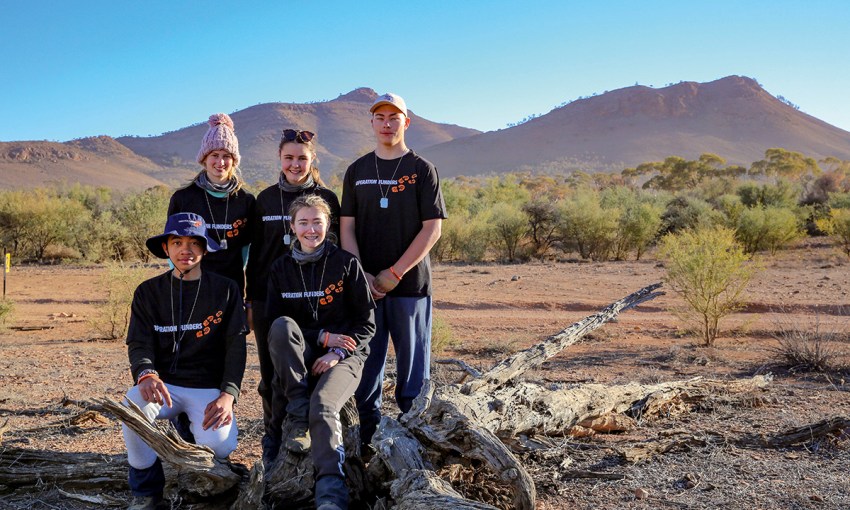
MISSION ACCOMPLISHED
Sixteen-year-old Tyson and his peers from the Eyre Peninsula look filthy, exhausted and quiet, but proud. They have reached the extraction point on day eight, and a ceremony is held on the side of the dirt road, before they board a bus for the very long drive home. There is applause as each person is called to be presented with dog tags and t-shirts. “It’s an amazing feeling,” says Tyson, who was encouraged by his teammates when he was suffering from a bad case of blisters.
“We were always checking in on each other, especially this morning when someone was sick; there was always a person by their side,” Tyson says. “And yesterday I wasn’t going well, and everyone was checking in to see how I was going and helping me along. My team did an amazing job and everyone really impressed me.”
“A lot of my friends back at school have done this, and they set me up with what to expect. They said it was going to be tough — and it was. You’ve just got to push through.”
This story first appeared in the February 2020 issue of SALIFE magazine.



